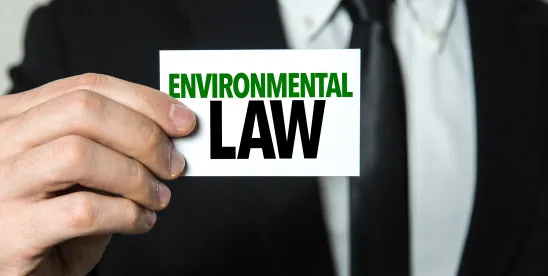This morning, our nation's highest court agreed to hear an appeal by seven Utah Counties and a railroad company of a DC Circuit Court of Appeals decision. That DC Circuit decision revoked the Surface Transportation Board's approval of a new 88-mile rail line connecting the Uinta Basin, a remote area the size of Maryland, with the rest of the Utah.
The Supreme Court will now decide whether the National Environmental Policy Act requires a federal agency to consider any environmental effects of a project subject to the Agency's jurisdiction or only those effects within the Agency's jurisdiction.
The Third, Fourth, Sixth, Seventh, and Eleventh Circuit Courts of Appeals have concluded that the Supreme Court's decision in Department of Transportation v. Public Citizen means that a Federal Agency's NEPA review is limited to those potential environmental effects of a project within the jurisdiction of the Federal Agency.
The DC Circuit, the Ninth Circuit, and the Biden Administration Council on Environmental Quality have concluded that a Federal Agency must consider all “reasonably foreseeable” environmental effects of a project whether or not the Federal Agency can do anything about said effects.
And so, the DC Circuit found that the Surface Transportation Board erred in not studying the environmental effects of the extraction, refinement, and transportation of oil that would be facilitated by the construction and operation of the Utah rail line that it approved. In 2020 the Ninth Circuit Court of Appeals similarly ruled that the Bureau of Ocean Energy Management should have estimated emissions from foreign oil consumption in reviewing the environmental impacts of an offshore oil drilling and production facility.
Anytime the current Supreme Court agrees to review a split between the Circuit Courts of Appeals involving the Ninth Circuit, the smart money will be on the other side and this case will not be an exception to that rule. We should expect the Supreme Court to hold, as the Sixth Circuit Court of Appeals has, that Federal agencies may limit their NEPA review to effects proximately caused by actions over which they have regulatory responsibility and that any contrary judicial opinions or executive branch regulations go beyond what Congress has authorized. I don't mean to suggest that's the only legal conclusion, or that it is one that the Supreme Court would have reached only a few years ago. But it is almost certainly the decision that this Supreme Court will make now.
And there is a silver lining for those who see this as a cloud. As I've written in the past, the average time it takes for National Environmental Policy Act review of infrastructure projects is four- and one-half years. That doesn't include the time necessary to resolve the almost inevitable court challenges most infrastructure projects face. Streamlining NEPA review can only help address that drag on the construction of renewable energy infrastructure. Of course it would be best if Congress and the President addressed that challenge head on, as it would be best if they addressed this Supreme Court's view of the current reach of the Federal Clean Water Act. Perhaps interventions by the Supreme Court like this one will cause Congress to begin doing its job some time in 2025. In the meantime, we should expect the Supreme Court to continue to interpret Federal environmental laws more narrowly than they have been interpreted.




 />i
/>i

